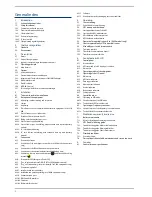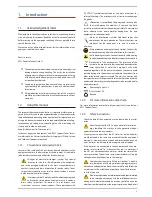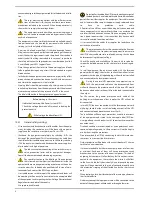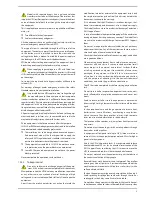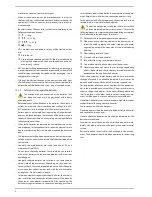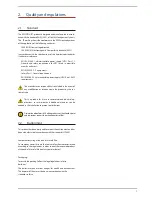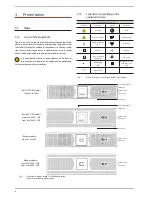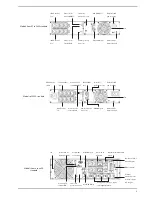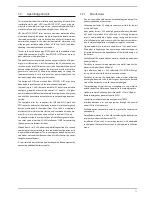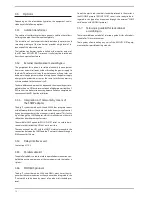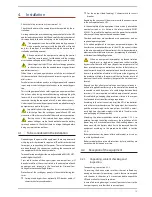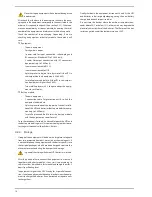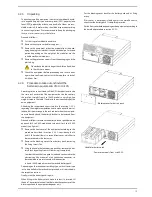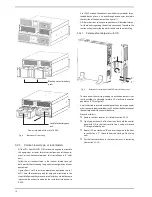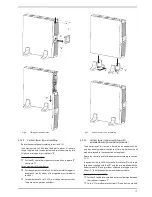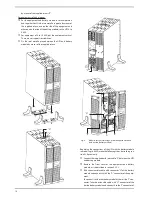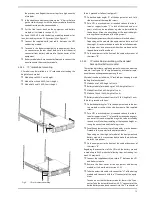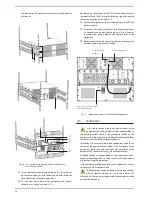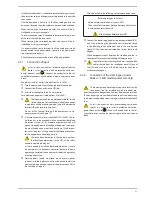
6
are abrasive, corrosive, liquids or detergent.
• when it is needed to remove the protection cover to access to
the terminals, they will have to be put back before starting up the
equipment. otherwise you may incur personal injury or equip-
ment damage.
• be careful to not lift heavy loads without help, according to the
following recommendations:
, < 18 kg.
, 18 - 32 kg.
, 32 - 55 kg.
, > 55 kg.
• UPSs are electronic equipments, so they will be treated as they
are:
Avoid shocks.
Avoid jolting or bouncing of the UPS, like those produced by
moving the equipment on a hand truck and move on an un-
even or wavy surface.
• UPS transport will be done packaged inside its original packaging
in order to prevent it from shock and impact and by means of the
suitable type of packaging (carton box, pallet packaging, ...) and
appropriate to its weight.
• Although the physical location of the elements can differ from
the illustrations in this manual in some cases, the correct labelling
correct the possible doubts and makes easy its comprehension.
1.2.3.3. Safety warning regarding batteries
•
The manipulation and connection of the batteries shall
be done and supervised by personnel with battery
knowledge only.
before doing any action, disconnect the batteries. Check that no
current is present and there is not dangerous voltage in the DC
bUS (capacitors) or in the endpoint of the battery set terminals.
battery circuit is not isolated from input voltage. Dangerous volt-
ages can be found between the terminals of the battery set and
the earth. Check that there is not any voltage at the input before
take any action over them.
• when faulty batteries are replaced, the complete battery set has
to be replaced, less exceptional cases in new equipments, were
due to manufacturing faults it will only be replaced the defective
ones.
The replacement will be done by another one of the same type,
voltage, capacity, quantity and brand. All of them has to be of the
same brand.
• Generally, the used batteries are sealed lead acid of 12V and
maintenance free (VRlA).
• Do not reuse the faulty batteries. There could be an explosion
or burst any battery with the involved problems and issues that
could happen.
• Generally supplied batteries are installed in the same cabinet,
case or rack of the equipment. Depending on the power, au-
tonomy or both, they can be supplied separately from the equip-
ment in another cabinet, case or rack, with the interlink cables
among them. Do not modify its length.
• in those equipments requested without batteries, their acquisi-
tion, installation and connection of themselves will be done by
the end-user and under his responsibility. Data concerning the
batteries as regards to quantity, capacity and voltage, are stated
in this battery label sticked beside the nameplate of the equip-
ment. Respect these data, battery connection polarity strictly.
For an optimum and efficient operating, the battery set has to be
located as close as possible to the equipment.
•
The battery voltage can involve the risk of electric shock
and can produce high short circuit currents. observe the
following preventive measures before manipulating any terminal
block identified in the labelling as «batteries»:
Disconnect the corresponding protection elements.
when connecting a battery cabinet to the equipment, re-
spect the cable’s polarity and colour (red-positive; black-
negative) indicated in the manual and in the corresponding
labelling.
wear rubber gloves and shoes.
Use tools with insulated handles.
Take off watches, rings or other metal objects.
Do not place metal tools or objects over the batteries.
never manipulate with your hands or through conducting
objects, do not short either the battery terminal block of the
equipment or the own from the batteries.
• when the equipment and/or battery module has a protection
through a fuse and it is needed to be replaced, it will always be
done by another one with the same dimension, type and size.
• For long periods of disconnection, consider that the equipment
has to be connected once a month for 10 hours as minimum, in
order to charge the batteries, so the irreversible degradation of
itself is avoided. on the other hand, in case of storing an equip-
ment, it will be done in a fresh and dry place, never outdoors.
• never short the battery terminals as it involves a high risk. it involves
the detriment of the equipment and batteries.
• Avoid mechanical efforts and impacts.
• Do not open or mutilate the battery. Spilled electrolyte is harmful
and toxic to the skin and eyes.
• Do not dispose the batteries in a fire and high temperatures. The
batteries may explode.
• in case of contact of the acid with parts of the body, wash imme-
diately with plenty water and call urgently the nearest medical
service.
• batteries involve a serious risk for the health and for the environ-
ment. Their disposal should be done according to the existing
laws.


